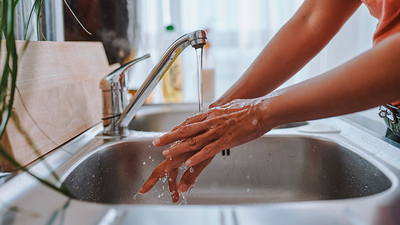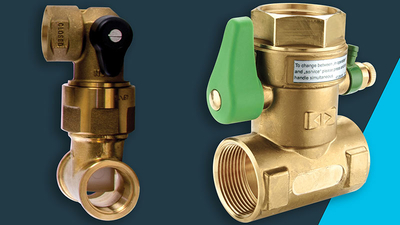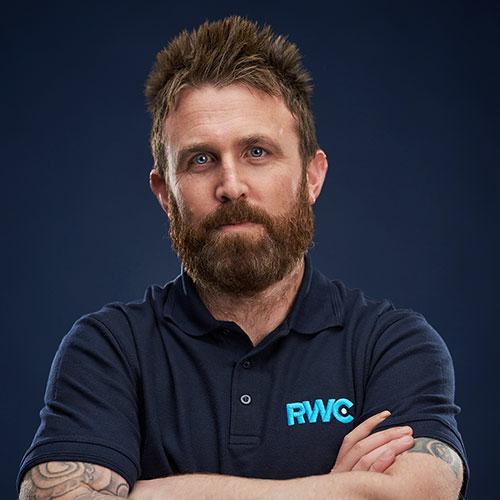How water control valves help ensure plumbing health and safety

No matter the environment – be it commercial buildings, public buildings or domestic dwellings – water safety is essential. To maintain a safe water supply, water control valves are crucial, serving a variety of purposes from delivering safe and consistent water temperature to keeping systems free of harmful bacteria.
For specifiers and installers, knowing the role of individual valves and the requirement for different environments is key to delivering safety in every building's plumbing design. This includes knowledge of regulatory standards, building codes, and industry best practices governing the installation and maintenance of water systems.
Not sure where to begin? In this blog, we’ll take you through the key need to knows about achieving water safety through valves, and how to approach each project with the knowledge and solutions necessary for a safe and secure installation.
Maintaining safety at the point of use
Users of hot water systems are at risk of scalding if the temperature isn’t correctly maintained at the outlet, therefore, taking the right steps to ensure safety at the point of use is crucial. Thermostatic Mixing Valves (TMVs) are a crucial component in maintaining safe draw-off temperatures as they blend hot and cold water to achieve a controlled outlet temperature that minimises the risk of scalding.
Legislation mandates the use of TMVs in certain settings to protect users from scalding incidents. In newly built homes, TMVs have been a requirement since 2010, while buildings that have been retrofitted have been subject to this regulation since 2012. These legal requirements reinforce the importance of implementing TMVs to uphold water safety standards and prevent accidents.
Healthcare facilities in particular must adhere to stringent guidelines for ensuring safe hot water systems. Through its Safe Water in Healthcare Premises Technical Memorandum, the NHS provides comprehensive guidance on the requirements for safe hot water, emphasising the critical role of TMVs in maintaining water temperatures within safe limits to protect patients, staff, and visitors from the risk of scalding injuries.
By incorporating TMVs into hot water systems, whether in residential, commercial, or healthcare settings, installers can ensure compliance with regulations and promote a safer environment for users. These valves not only protect against scalding incidents but also contribute to overall water safety and peace of mind for users and building owners.

Preventing bacteria growth
Preventing the growth of bacteria within water systems is essential for maintaining water safety and protecting users from potential health risks. When conditions allow, such as when water temperatures are high enough to enable bacteria growth, or when water stagnation takes place, bacteria can grow rapidly, posing health concerns for users if ingested.
One effective measure to combat bacterial growth is the use of Anti-Legionella Valves. These specialised valves are designed to prevent bacteria from breeding through cold water storage systems by continuously renewing the water content within the system. By enabling water circulation within the expansion vessel, Anti-Legionella Valves help mitigate the risk of bacterial growth and ensure the ongoing safety of the water supply when water is drawn off the system.
In environments where the risk of bacterial contamination is heightened, such as hotels and public buildings, the installation of Anti-Legionella Valves is particularly crucial. These valves provide an additional layer of protection against waterborne bacteria, complementing other measures such as regular flushing and water temperature monitoring to uphold water safety standards.
By incorporating Anti-Legionella Valves into water systems, installers and specifiers can proactively address the risk of bacterial growth and enhance the overall safety and quality of the water supply. These valves serve as an essential safeguard against the potential health hazards associated with bacterial contamination, helping to ensure peace of mind for building occupants and stakeholders.
Safeguarding water supplies
Preventing backflow is essential for ensuring both user safety and the integrity of the whole water supply. Backflow occurs when there is a sudden drop in pressure within a water system, causing water to flow in the opposite direction and potentially contaminate the water supply with pollutants or pathogens.
The level of risk associated with backflow is classified by Fluid Category levels, with categories 1 and 2 representing low-risk environments and category 5 indicating buildings at serious risk. In low-risk environments, such as domestic properties, the installation of Single Check Valves is typically sufficient to safeguard against backflow incidents.
However, in higher-risk environments, such as healthcare facilities or industrial settings, more robust measures are required to prevent backflow. These include the installation of specialised valves like Reduced Pressure Zone Valves (RPZVs), which provide enhanced protection by creating a physical barrier to prevent the reverse flow of water.
By prioritising appropriate backflow prevention measures tailored to the level of risk in a given environment, installers can effectively protect both users and the broader water supply from potential contamination and health hazards. Proactive backflow prevention not only ensures compliance with regulatory standards but also promotes the safety and well-being of individuals and communities reliant on clean and potable water.

Ensuring safe operating pressure
Maintaining safe operating pressure within a property's water supply is essential for the safety and functionality of plumbing systems. Pressure Reducing Valves (PRVs) play a crucial role in regulating water pressure at the point of entry, especially in instances where high entry pressures are common. Without proper regulation, excessively high water pressure can pose risks to both plumbing fixtures and appliances, potentially leading to leaks, pipe bursts, and even property damage.
Although not a legal requirement in properties, the installation of PRVs is highly recommended as an effective means of maintaining safe water pressure throughout the system. By reducing the inlet pressure to a safe and manageable level, PRVs ensure that water flow is appropriate for each outlet and appliance, therefore preventing potential hazards and extending the lifespan of plumbing components.
Another consideration in maintaining a safe pressure is for the optimum performance of other valves within the system, such as TMVs. By ensuring consistent and controlled water pressure, PRVs contribute to the overall safety and efficiency of the plumbing system, providing users with peace of mind and confidence in the reliability of their water supply.
Overall, ensuring water safety is paramount in both domestic, commercial and public settings. Water control valves are essential for maintaining a safe water supply by regulating temperatures, preventing bacterial growth, protecting against backflow, and controlling pressure. Specifiers and installers play a vital role in this process by understanding valve functions and requirements to ensure every building design and installation meets safety standards. Therefore, through the correct specification and use of water control valves, safety can be prioritised for all users.
Discover more
We offer a wide range of high-performance water control valves and heating system components offering longevity of service and ease of installation across a broad range of domestic, commercial and industrial applications.
